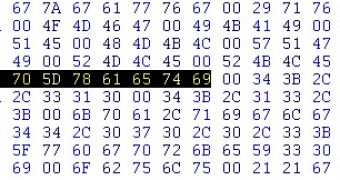The piece of malware that caused havoc and destruction in 2006 has been thoroughly analyzed by law enforcement officials and security analysts who found significant clues that led to the arrests of the m00p virus' creators.
Graham Cluley took part at Detective Constable Bob Burls' of the UK's Police Central e-Crime Unit (PCeU) and F-Secure's Mikko Hyppönen's presentation at the Virus Bulletin in Barcelona and found out more about the investigation that resulted in the arrest of several men, suspected as being behind the m00p virus.
A lot of institutions suffered hacks in that period, but a cyberattack on a hospital caught the eye of Constable Burls who discovered that the botnet used in the hit was being controlled by a domain registered to a website address called [email protected]
Further investigations led to a security company, Opton-Security, owned by Matthew Anderson, a 33-year-old, father of five, which later turned out to be one of the masterminds behind the hacking operations.
During the examination, law enforcement officials found a large number of things that incriminated the suspects.
For instance, Artturi Alm, from Finland, embedded his social security number into the code of m00p. Another mistake he made was that he got a tattoo of the nickname Okasvi, that he'd used in some of the hacking operations.
Matthew Anderson, the man behind Warpigs, was logged on to the m00p IRC server when he was arrested.
The final suspect from the case is a 63-year-old man from Suffolk, UK. He was the one in charge of handling the machines that sent some of the spam messages containing the virus.
According to the authorities, the operation was shut down, but unfortunately a lot of the ones involved, from countries like Canada, Scotland, Finland, USA, Kuwait, France, and Italy, still remain at large.
In the end, the presentation proved that if law enforcement bodies collaborate with security providers, their resources for catching hackers will become much more effective and cybercriminals can be brought to justice before they can hurt anyone else.

 14 DAY TRIAL //
14 DAY TRIAL //